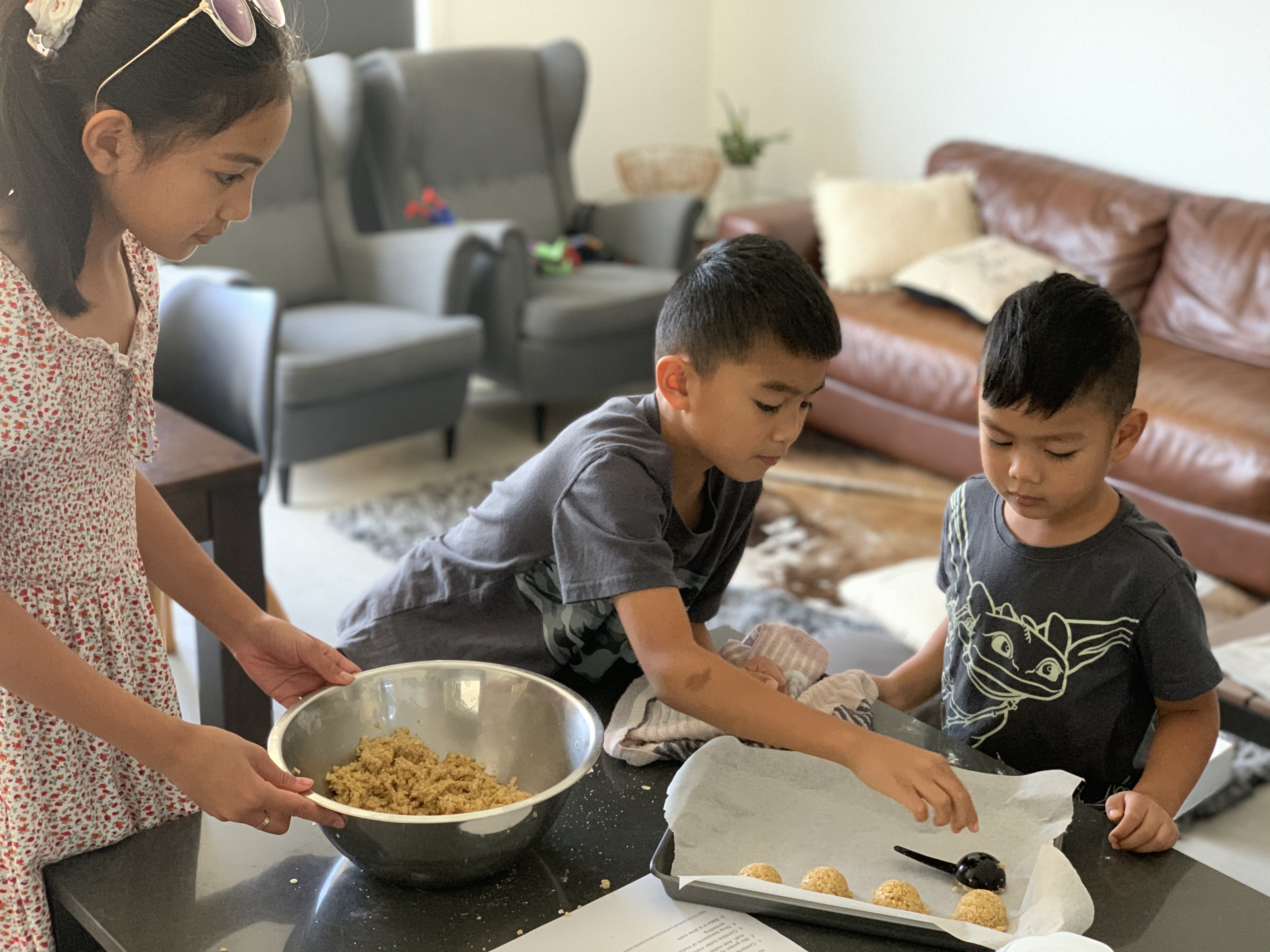By Azariah Hullana
With the world at a standstill, I thought it would be a good time to start a new tradition for our family. Anzac Day is around the corner and in keeping with Australian tradition to commemorate our fallen soldiers, our family attempted baking Anzac biscuits!

It seems food is in short supply these days. Fortunately, I was able to purchase some flour before the panic buying took place. Yet, food shortages increasingly became a reality for the Australian Homefront during the Great War. The origin of the sweet Anzac biscuit we know and love is unclear but we do know that its recipe became rife in Australian recipe books from the 1920s and onwards (Conde 2008).
Some contest that wives and women’s groups sent care packages which included these long-lasting biscuits to the Anzacs, hence, no eggs in the recipe. One source claims to have found soldiers’ letters that confirm biscuits were sent to the frontline as a source of comfort and nourishment (Reynolds 2018). Others would suggest that these were never sent to soldiers. Instead, because the ingredients were pantry staples, it was a popular fundraiser item for the war effort (Wikipedia 2020).
It is an intriguing origins debate but regardless of your position, it is indisputable that the Anzac biscuit has become a symbol intertwined with the Anzac legend. Seemingly ordinary with simple everyday ingredients, the Anzac biscuit is far from an ordinary biscuit. No other biscuit contains the word Anzac. Anzac is a word protected by the government and law. The Anzac legend is integral to Australian culture and identity and is arguably the most sacred from a secular standpoint.
...it is indisputable that the Anzac biscuit has become a symbol intertwined with the Anzac legend.
The ANZACs were imperfect, ordinary people that have come to represent each of us. “We like what the ordinary teach us”, former Prime Minister Paul Keating stated in his 2013 Remembrance Day speech. Gallipoli was a failed military venture but the Anzacs stuck through it. They embodied ideals we’ve come to value as a nation of independence, mateship, resourcefulness, resilience and courage in adversity. “Despite the fact that the military campaigns were shockingly flawed and incompetently executed, those ‘ordinary people’ distinguished themselves by their latent nobility” (Keating 2013). Likewise, this idea extends to the beloved Anzac biscuit and what it represents to us as a nation.
Who knew that a simple biscuit could signify so much? It is an ubiquitous biscuit but one cannot underestimate its cultural significance in Australia. Within it contains the ordinary but it has evolved to symbolise enduring values of love, nourishment, and care. It is these powerful key ingredients that elevate its worth. In these tumultuous times, let us therefore, as a nation, a church, as individuals, keep things in perspective.
Let us, in the spirit of the Anzacs, in the spirit of “love thy neighbour” transcend from the ordinary.
Vicky was only five months old the last time my husband and I had visited the War Memorial. As we walked, our steps echoed through the sombre halls of the War Memorial. It was so silent, so still, it was as if we could hear the sound of our own hearts beating as we made pace toward the tomb of the Unknown Soldier. Enshrined there were the words: “An unknown Australian soldier killed in the war of 1914-1918”. At the head of the tomb is inscribed “Known unto God” and at the foot, “He is all of them and he is one of us”.
Ingredients
- 2 cups rolled oats
- 1/2 cup sugar
- 1 cup plain flour
- 1/2 cup melted butter
- 1 tbls golden syrup
- 2 tbls boiling water
- 1 tsp bicarbonate soda (add a little more water if mixture is too dry)
Method
- Combine dry ingredients.
- Mix golden syrup, boiling water and bicarbonate of soda until they froth. Add melted butter.
- Combine butter mixture and dry ingredients.
- Drop teaspoons of mixture onto floured tray, allowing room for spreading.
- Bake in a slow oven.
Anzac Biscuit Recipe, https://www.awm.gov.au/articles/encyclopedia/anzac/biscuit/recipe [accessed 20.04.2020]
Conde, A. (2008), Anzac Biscuits, https://www.awm.gov.au/articles/blog/anzac-biscuits [access date 15.04.2020].
Keating, P. (2013) Remembrance Day Speech, http://www.keating.org.au/shop/item/remembrance-day-speech-2013 [access date 16.04.2020].
Reynolds, A. (2018) The Real Origins Of The Anzac Biscuit Revealed, https://www.adelaidenow.com.au/delicious-sa/the-real-origins-of-the-anzac-biscuit-revealed/news-story/7ab7ff63b5399ea16059bb0a072c8ffc [accessed 18.04.2020].